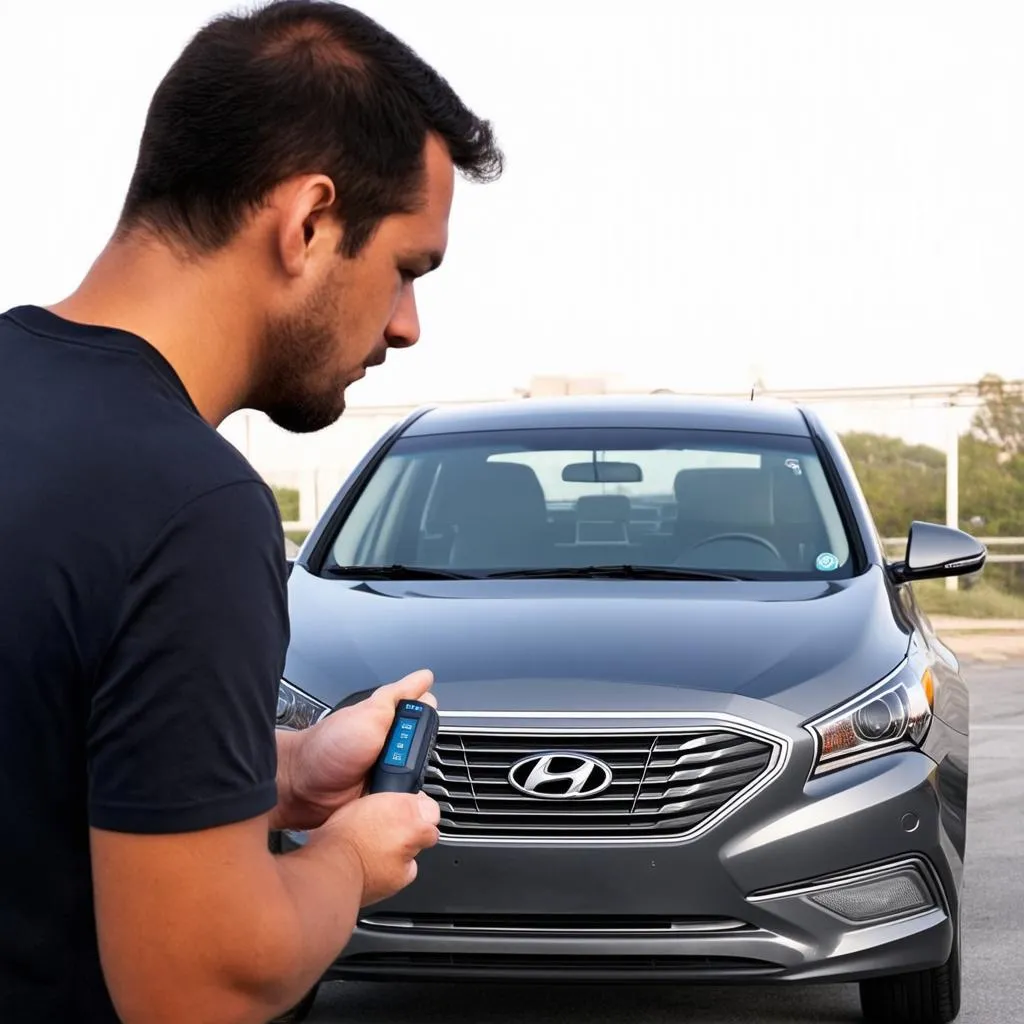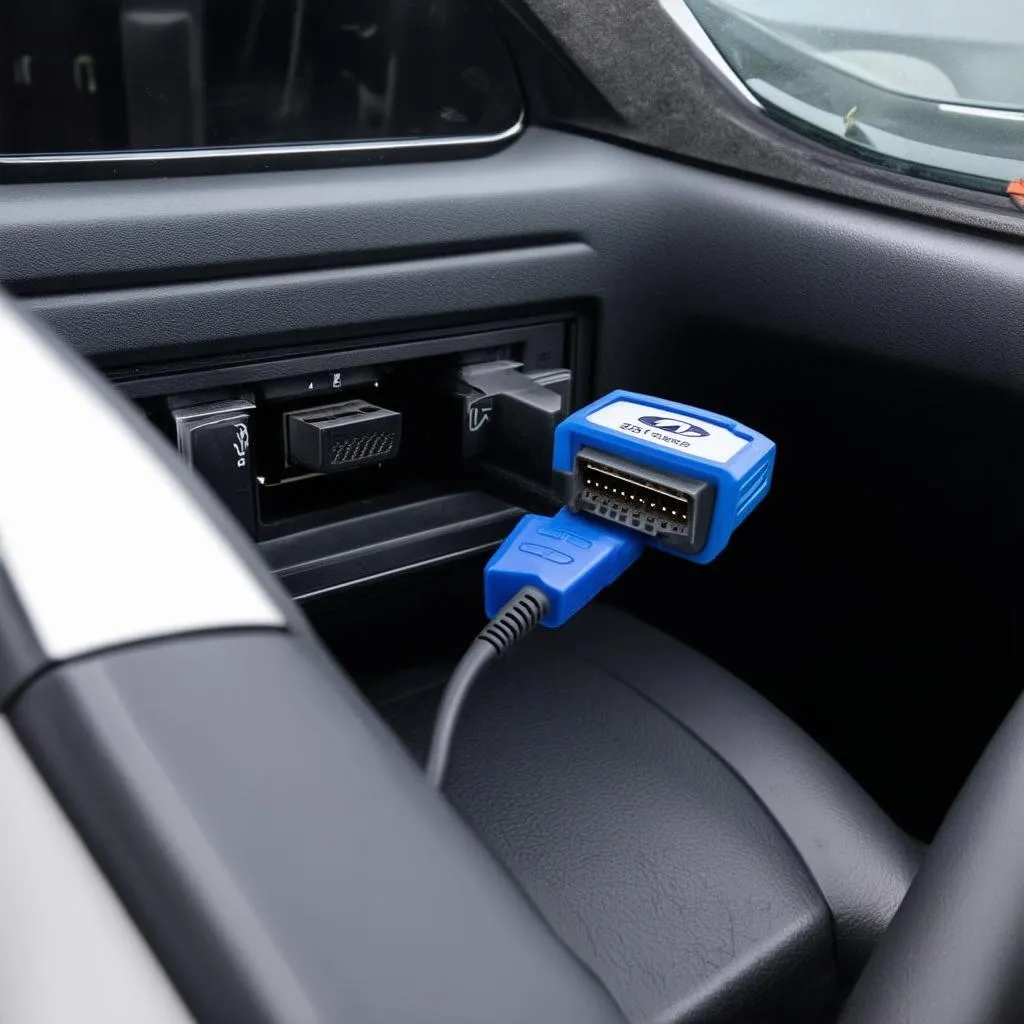Have you ever found yourself stuck on the side of the road, engine sputtering, and wondering what the heck is going on? You pull out your trusty OBD scanner, plug it in, and…nothing. Just a blank screen. You might think, “Wait, what about those CAN connections? Don’t I need them to work on modern cars like my Hyundai Sonata?”
This is a common question, and it’s one we get asked a lot here at TechCarUSA. Let’s dive into the world of CAN connections and OBD scanners, explore why they’re important, and see how they all work together (or not) to help you diagnose your car.
Understanding CAN Connections and OBD Scanners
The Importance of CAN Connections
The Controller Area Network (CAN) bus is a revolutionary communication protocol that revolutionized automotive systems. Imagine your car’s engine, transmission, ABS brakes, and even infotainment system as individual “brains.” CAN connections are like the highways that connect these “brains” and allow them to exchange information, ensuring everything works in harmony.
Think of it this way: In the past, diagnosing a problem often involved tracing wires, checking relays, and following complex electrical diagrams. With CAN, it’s like having a central hub that allows you to see the health of all the “brains” in your car, making diagnostics faster and more efficient.
The Role of OBD Scanners
An OBD (On-Board Diagnostics) scanner is your key to accessing this vast network of information. It’s like a translator that can read the language spoken by your car’s CAN bus. When you plug an OBD scanner into your Hyundai Sonata’s port, it can tap into this network and retrieve valuable data, including:
- Engine codes: Those pesky “check engine” lights often point to specific engine codes that can help you troubleshoot the issue.
- Live data: See real-time data streams for engine parameters, like fuel pressure, RPM, and coolant temperature.
- Vehicle information: Get details like VIN, mileage, and even tire pressure.
But, Do I Need CAN Connections for My Hyundai Sonata OBD Scanner?
The short answer is: It depends.
Most modern OBD scanners, including those for Hyundai Sonata models, are CAN-compatible. This means they can read and interpret the information flowing through the CAN bus, allowing you to get a more comprehensive view of your car’s health.
However, there are some older or cheaper OBD scanners that might not support CAN communication. These might only work with the older, less sophisticated communication protocols that were prevalent in earlier car models.
There are also some OBD scanners that claim to be “CAN-compatible” but might have limited support for certain vehicle models. That’s why it’s crucial to check the compatibility information of your specific OBD scanner.
What to Look for in a Hyundai Sonata OBD Scanner
When shopping for a Hyundai Sonata OBD scanner, here are some important things to consider:
- CAN compatibility: Ensure that the scanner you choose explicitly states that it supports CAN communication.
- Vehicle coverage: Confirm that the scanner is compatible with Hyundai vehicles, and specifically with your Sonata model year.
- Features: Do you need live data, engine code reading, or advanced diagnostics? Choose a scanner with the features that meet your needs.
- Reviews: Read reviews from other users to get an idea of the scanner’s performance and reliability.
Finding the Right OBD Scanner
Don’t be afraid to ask questions. Reach out to your local auto parts store or consult online forums for advice. If you’re unsure, it’s always best to err on the side of caution and choose a scanner with proven CAN compatibility.
Common Questions about Hyundai Sonata OBD Scanners
1. Can I use my generic OBD scanner on my Hyundai Sonata?
While some generic scanners might work, it’s best to choose a scanner specifically designed for Hyundai vehicles. This ensures better compatibility and access to more accurate data.
2. Does the Hyundai Sonata have a special OBD port?
No, Hyundai Sonata models use the standard OBDII port, commonly found under the dashboard, near the steering column.
3. What are the most common engine codes found on the Hyundai Sonata?
This can vary depending on the model year and engine, but some common codes include:
- P0300: Multiple cylinder misfire detected
- P0171: System too lean (Bank 1)
- P0420: Catalyst System Efficiency Below Threshold (Bank 1)
4. Can I use an OBD scanner to clear the check engine light?
Yes, most OBD scanners can clear the check engine light after diagnosing and resolving the underlying issue.
5. Can I use an OBD scanner to diagnose more than just engine issues?
While OBD scanners primarily focus on engine diagnostics, some advanced models can also access other systems like ABS, airbag, and transmission.
Final Thoughts
Unlocking the secrets of your Hyundai Sonata’s CAN network can be a game-changer for both DIY enthusiasts and professional mechanics. With the right OBD scanner, you can gain insights into your car’s health, diagnose problems proactively, and potentially save yourself a trip to the dealership. Remember, though, a good OBD scanner is just the beginning.
Important Note:
While using an OBD scanner can be a valuable tool, it’s essential to remember that automotive repair requires expertise. If you’re not comfortable working with complex electrical systems, seek guidance from a certified mechanic.
 obd scanner
obd scanner
 hyundai sonata obd scanner
hyundai sonata obd scanner
Don’t hesitate to reach out to us here at TechCarUSA if you have any questions about CAN connections, OBD scanners, or any other car-related topic. We’re happy to help! You can contact us directly at our WhatsApp: +84767531508. We have a team of automotive experts available 24/7 to assist you with any automotive concerns.